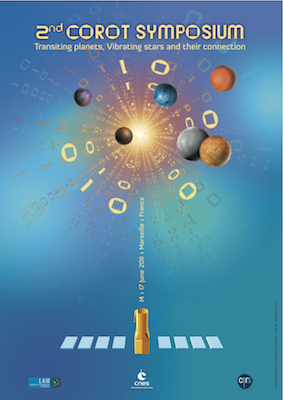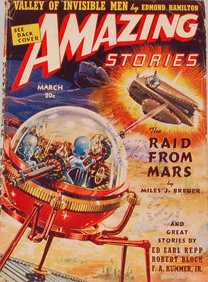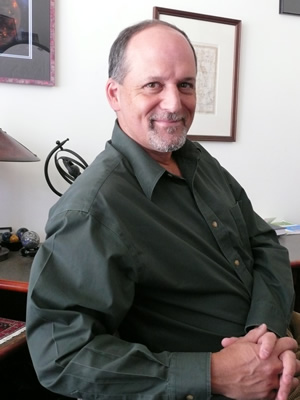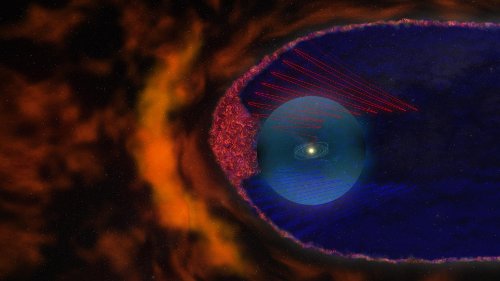Centauri Dreams
Imagining and Planning Interstellar Exploration
100 Year Starship Study: Call for Papers
We’re keeping a close eye on the 100 Year Starship Study, and with the call for papers for its upcoming conference just issued, I want to run this verbatim.
Addendum: The DARPA teleconference for the 100 Year Starship Study ended about 1215 EST. I’m compiling my notes and should have something up about it either later this afternoon or tomorrow.
DARPA Encourages Individuals and Organizations to Look to the Stars; Issues Call for Papers for 100 Year Starship Study Public Symposium
In 1865, Jules Verne put forward a seemingly impossible notion in From Earth to the Moon: he wrote about building a giant space gun that would rocket men to the moon. Just over a century later, the impossible became reality when Neil Armstrong took that first step onto the moon’s surface in 1969.
A century can fundamentally change our understanding of our universe and reality. Man’s desire to explore space and achieve the seemingly impossible is at the center of the 100 Year Starship Study Symposium. The Defense Advanced Research Projects Agency (DARPA) and NASA Ames Research Center (serving as execution agent), are working together to convene thought leaders dealing with the practical and fantastic issues man needs to address to achieve interstellar flight one hundred years from now.
DARPA and NASA Ames Research Center are soliciting abstracts for papers and/or topics/members for discussion panels, to be presented at the 100 Year Starship Study Symposium to be held in Orlando, Florida from September 30 through October 2, 2011.
The symposium is expected to attract roughly hundreds of people from around the world. Speaking abstracts for papers and proposed panels should be submitted online at www.100yss.org by 2:00 pm ET on Thursday, July 8, 2011.
“This won’t just be another space technology conference – we’re hoping that ethicists, lawyers, science fiction writers, technologists and others, will participate in the dialog to make sure we’re thinking about all the aspects of interstellar flight,” said David Neyland, director of the Tactical Technology Office for DARPA. “This is a great opportunity for people with interesting ideas to be heard, which we believe will spur further thought, dreaming and innovation.”
The conference will include a series of tracks. Individuals may submit speaking abstracts directly related to these topics, or they can propose entirely different ideas.
- Time-Distance Solutions [propulsion, time/space manipulation and/or dilation, near speed of light navigation, faster than light navigation, observations and sensing at near speed of light or faster than light]
- Education, Social, Economic and Legal Considerations [education as a mission, who goes, who stays, to profit or not, economies in space, communications back to earth, political ramifications, round-trip legacy investments and assets left behind]
- Philosophical, and Religious Considerations [why go to the stars, moral and ethical issues, implications of finding habitable worlds, implications of finding life elsewhere, implications of being left behind]
- Biology and Space Medicine [physiology in space, psychology in space, human life suspension (e.g., cryogenic), medical facilities and capabilities in space, on-scene (end of journey) spawning from genetic material]
- Habitats and Environmental Science [to have gravity or not, space and radiation effects, environmental toxins, energy collection and use, agriculture, self-supporting environments, optimal habitat sizing]
- Destinations [criteria for destination selection, what do you take, how many destinations and missions, probes versus journeys of faith]
- Communication of the Vision [storytelling as a means of inspiration, linkage between incentives, payback and investment, use of movies, television and books to popularize long term research and long term journeys]
DARPA contends that the useful, unanticipated consequences of such research – benefits from improved propulsion to energy storage and life support – can ultimately benefit the Department of Defense and to NASA, as well as the private and commercial sector.
The 100 Year Starship Study aims to culminate in the creation of a self-sustaining organization that will tackle all the issues and challenges inherent in long duration interstellar space flight. Additional information about the project may be found by visiting www.100yss.org. The public symposium is intended to seed creative energy to “kick-start” long term research goals.

100 Year Starship Study Public Symposium
The 100 Year Starship Study being developed through DARPA and NASA Ames now has its Web site up, from which the following:
DARPA and NASA are jointly planning the 100 Year Starship Study Symposium that will be held from September 30 through October 2, 2011 in Orlando, FL. The goal of the symposium is to promote discussions that will bring us closer to standing up an organization that can shepherd efforts to help achieve interstellar flight in the next century. The symposium is expected to attract roughly 2,000 people from throughout the United States as well as from foreign countries. The public symposium is a follow up to the January Strategic Planning Workshop.
In addition to keynote and plenary sessions, the symposium will have a set of seven tracks built around the following topics:
- Time-Distance Solutions
- Education, Social, Economic
- Legal Considerations and Philosophical and Religious Considerations
- Biology and Space Medicine
- Habitats and Environmental Science
- Destinations
- Communication of the Vision

CoRoT’s New Planets
Although we talk about space-based observatories ‘discovering’ planets, the actual process is much more complex. Data from CoRoT, for example, must be validated carefully to make sure that what is being observed is actually a planet. That means turning to follow-up observations by ground-based telescopes, so that the whole package of photometric and spectroscopic data can confirm the planet and help us understand the system in which it orbits. New results from the Second CoRoT Symposium in Marseille are in, adding another 10 planets to CoRoT’s roster.

Thus we get seven ‘hot Jupiters,’ a planet smaller than Saturn (CoRoT-22b), and a pair of Neptune-mass planets (CoRoT-24b and CoRoT-24c) orbiting the same star. These gaseous planets come in a wide range of densities, from one that is roughly as dense as Saturn to higher densities comparable to Mars. It’s also an interesting mix in terms of age. CoRoT-17b is, at 10 billion years, twice as old as the Sun, while CoRoT-18b is still a juvenile at 600 million years. And we have two planets (CoRoT-16b and CoRoT-20b) on highly elliptical orbits, posing questions about the long-term survival of such orbits.
Malcolm Fridlund, ESA’s project scientist for CoRoT, comments on the finds:
“Although the study of exoplanets is relatively young, we have already reached a stage where we can characterise the details of worlds orbiting other stars, and CoRoT is making a crucial contribution to this field. With hundreds of systems observed to date, we no longer have to worry about ‘taming the beasts’ and we can dedicate our efforts to the ‘zoology’ of exoplanets, which is enormously enhancing our knowledge about planetary systems.”
Zoology indeed, a careful process of classification and analysis that we have only begun on the exoplanet front. CoRoT has now found 26 confirmed extrasolar planets, with 401 planet candidates still in the process of confirmation. While the transit data from the space observatory can measure the radius of a planet, the measurement of the planet’s mass requires ground observations using the Doppler method. We can look with great satisfaction at the results of missions like CoRoT even as we ponder the kind of space observatories we’ll need in the future, when our attention turns to nearby stars in the hopes of studying planetary atmospheres. Think TESS and PLATO, for starters.
A number of papers on the CoRoT findings are either available or have been submitted for publication, among them Sz. Csizmadia et al., “Transiting exoplanets from the CoRoT space mission – XVI. The hot Jupiter CoRoT-17b: a very old planet,” Astronomy & Astrophysics, 531, A41 (2011) — abstract available — and E. W. Guenther et al., “Transiting exoplanets from the CoRoT space mission – XIX. CoRoT-19b: a low density planet orbiting an old, inactive F9V-star,” submitted to Astronomy & Astrophysics.

Asimov’s Vesta and Ours
With the Dawn spacecraft on its approach to Vesta, I’ve been scouting around for science fiction that involves this interesting asteroid. The one story that stands out is famous for its author more than its quality. It’s “Marooned Off Vesta,” which turns out to be Isaac Asimov’s first published story. John Campbell rejected it at Astounding Science Fiction, so it was left to Amazing Stories‘ Ray Palmer to publish the Good Doctor’s first, written at the age of 18. “Marooned Off Vesta” appeared in Amazing‘s issue of March 1939 and would have faded into obscurity if its author hadn’t gone on to his spectacular career in fiction and non-fiction.

The era when Asimov didn’t make the cover of a magazine he was writing for didn’t last for long. I don’t particularly recommend you hunt this story down, although it appears (for sentimental reasons, I suppose) in 1973’s The Best of Isaac Asimov. Here a trio of space travelers in trouble look out at the surface of Vesta from their crippled craft. The dialogue positively clanks:
Brandon stared bitterly at the globe that filled almost the entire porthole, so Moore continued, “Watching Vesta won’t do you any good either.”
Mike Shea lumbered up to the porthole. “We’d be safe if we were only down there on Vesta. There’re people there. How far away are we?”
“Not more than three or four hundred miles judging from its apparent size,” answered Moore. “You must remember that it is only two hundred miles in diameter.”
“Three hundred miles from salvation,’~ murmured Brandon, “and we might as well be a million. If there were only a way to get ourselves out of the orbit this rotten fragment adopted. You know, manage to give ourselves a push so as to start falling. There’d be no danger of crashing if we did, because that midget hasn’t got enough gravity to crush a cream puff.”
Suffice it to say that “Marooned Off Vesta” is a bit of a slog. Nonetheless, the problem — how to get their shattered vehicle to safety using the limited supplies aboard the ship, is the heart of a tale whose problem solving and analysis of the physics involved reminds me of countless, more sophisticated works by a mature Asimov.
The embedded video below takes us to the post-Asimovian present. We can imagine Asimov’s crew looking out of their porthole at something vaguely like this. The video is actually a looping set of 20 images from Dawn taken for navigation purposes on June 1. One pixel here corresponds to 45 kilometers on the asteroid’s surface — the resolution approaches our best Hubble images of Vesta. Note the dark feature, about 100 kilometers in diameter, near the asteroid’s equator. It will be thrilling to see things like this resolve as Dawn draws ever closer to its rendezvous.
Dawn’s other target is Ceres, which it will travel to after completing its Vesta mission in 2012. Unlike Vesta, Ceres has a robust history in science fiction, from early tales like Garrett Serviss’ Edison’s Conquest of Mars (1898) through Larry Niven’s Known Space stories and novels like Joe Haldeman’s Buying Time (1989) and Bob Shaw’s The Ceres Solution (1981). The two asteroids could not be more different. Vesta has a differentiated structure, perhaps built around once radioactive materials in its core. We have much to learn about the place, but current thinking is that a layer of frozen lava covers deeper layers of rock and an iron/nickel core. The Vestoids, asteroids with similar orbital properties to Vesta, may have been created in the same impact that created a huge crater on Vesta’s south side, an event that also produced meteorites whose mineralogical composition leads researchers to associate them with Vesta.
Ceres, on the other hand, reminds us how much variety exists in the asteroid belt (a fact that Kevin Walsh offers an interesting hypothesis about in his current work on planetary migration). Ceres is larger than Vesta and almost spherical, with a density low enough to make it unlikely to have a metallic core. It’s now believed that Ceres is a cold body that never experienced internal heating. Frozen and perhaps liquid water — conceivably in copious amounts — may lurk below its surface, and there are some indications of frozen polar caps that evaporate in summer. The two asteroids are survivors of the planet-formation process, frozen in their development for 4.5 billion years. Dawn will be giving us a priceless look at the Solar System’s earliest era.

The Froth at System’s Edge
Our Voyager spacecraft are in a fascinating place indeed, where the stream of charged particles flowing out from the Sun — the solar wind — bumps up against what we might call the ‘interstellar wind,’ the tenuous material expelled from other stars in our neighborhood. We’ve looked at the solar wind’s possibilities for propulsion many times, pondering whether it could push a ‘magsail’ at high velocity to the outer system, and whether such a push would be controllable (it looks to be a turbulent ride indeed). But new work reminds us that the Sun’s magnetic field lines are likewise pushed outward by the solar wind. Merav Opher (Boston University) comments:
“The sun’s magnetic field extends all the way to the edge of the solar system. Because the sun spins, its magnetic field becomes twisted and wrinkled, a bit like a ballerina’s skirt. Far, far away from the sun, where the Voyagers are, the folds of the skirt bunch up.”
We’re learning from those same Voyagers as they move through the boundary region at system’s edge that the distant magnetic field is a place where magnetic field lines re-orient themselves, forming bubbles approximately 160 million kilometers wide. At this distance, the bubbles have become self-contained structures disconnected from the solar magnetic field. They’re large enough — a bit larger than the Earth’s distance from the Sun — that it would take weeks for the Voyagers to cross even one of them. For those of you keeping count, Voyager 1 is now traveling at just over 17 km/sec relative to the Sun, while Voyager 2 is at 15.5 km/sec.
Image: Red and blue spirals are the gracefully curving magnetic field lines of orthodox models. New data from Voyager add a magnetic froth (inset) to the mix. Credit: NASA
Once again Voyager overturns established ideas. The idea that the Sun’s magnetic field curved around to re-connect gracefully with the Sun now gives way at least partially to the idea of what University of Maryland physicist Jim Drake calls ‘a foam at the edge of the Solar System.’ What the Voyagers’ energetic particle sensor readings suggest is that the spacecraft are moving in and out of this foam in an area where the Solar System interacts with the rest of the galaxy. This region, the heliosheath, is our system border, and the characteristics of that border should affect how everything from galactic magnetism to cosmic rays fare as they try to enter the system.
Opher points out that the magnetic bubbles may be a major line of defense against galactic cosmic rays — sub-atomic particles accelerated to near light-speed — but we don’t yet have a handle on how efficient the bubble structure really is. Cosmic rays could become trapped inside the bubbles, but they may be too porous to maximize this effect. “We’ll probably discover which is correct as the Voyagers proceed deeper into the froth and learn more about its organization,” says Opher. “This is just the beginning, and I predict more surprises ahead.” With the Voyagers, we’ve learned to expect nothing less.
The paper is Opher et al., “Is the magnetic field in the heliosheath laminar or a turbulent bath of bubbles?” accepted by the Astrophysical Journal (preprint).

Geoff Marcy: Mission to Alpha Centauri

The Tau Zero Foundation is pleased to announce that planet hunter extraordinaire Geoffrey Marcy is now affiliated with the organization. As a Tau zero practitioner, Dr. Marcy will serve as a major point of contact on exoplanet issues, bringing with him the most storied portfolio in the planet-hunting business. Working closely with Paul Butler and Debra Fischer, Dr. Marcy (University of California at Berkeley) has discovered more extrasolar planets than anyone else, including 70 out of the first 100 to be found. His team’s findings include the first multiple-planet system, the first Saturn mass planets, and the first Neptune-mass planet. His awards are numerous: Shaw Prize in 2005, Discovery Magazine‘s Space Scientist of the Year in 2003, the NASA Medal for Exceptional Scientific Achievement, the Carl Sagan Award, the Beatrice Tinsley Prize, and the Henry Draper Medal from the National Academy of Sciences.
A warm welcome, Geoff!
Centauri Dreams readers will recall our coverage of the Next 40 Years of Exoplanets workshop at the Massachusetts Institute of Technology, where Geoff took up Sara Seager’s challenge to be provocative by taking on the powers that be at NASA, JPL and his own exoplanet community on behalf of Terrestrial Planet Finder and the lamented Space Interferometry Mission. He closed that session by making the case for a robotic mission to Alpha Centauri, a project that could in his judgment revitalize NASA and space agencies worldwide. Let me quote him on this:
“I’d like to make an appeal to President Obama. I think he should stand up and make the following announcement: That before the century is out we will launch a probe to Alpha Centauri, the triple star system, and return pictures of its planets, comets and asteroids, as soon as possible, even if it takes a few hundred years or a thousand years to get there. [Going to Alpha Centauri] would engage the K-12 children, it would engage every sector of our society… It would jolt NASA back to life, if we’re really lucky. And of course any such mission should be an international one involving Japan, China, India, Europe…”
Marcy went on to note that such a mission would bring not only scientific progress but the diplomatic coherence required as the world worked together toward this momentous common goal. In some ways, the call reminded me of Daniel Goldin’s days as NASA administrator, when just as the Pathfinder spacecraft was nearing Mars, he told reporters that building a robotic probe that could reach another star would become a NASA priority. Back then small steps were indeed taken. An Interstellar Probe Science and Technology Definition Team met at the Jet Propulsion Laboratory in early 1999 to consider the prospect, but budget realities and the daunting nature of the mission brought an early end to any organized effort within the agency.
Will Marcy’s call for an Alpha Centauri mission meet a better fate? We can hope so and continue to draw researchers together to work toward this end even as the exoplanet hunt continues. Marcy’s challenge at the MIT meeting was embedded within a discussion of the exoplanet field and its tools today, and it’s a good time to review the discussion (you can see Geoff’s talk by following this link to the MIT archives). The key to exoplanet research is getting the spectra needed to study these worlds, and Marcy said it was the nearby stars that offered the real, 40-year future of exoplanet research: “Habitable planets around the nearest stars, those within 25 light years, offer enormous advantages over those that orbit more distant stars.”
The advantages: Planets around nearby stars can be imaged, allowing spectroscopy. Proximity also allows us to measure the zodiacal dust around those stars, both to study the dust in its own right, but also to be able to subtract the dust signature to more clearly resolve an Earth-like planet. We can also measure the masses of planets around nearby stars through either Doppler or astrometric methods. “And frankly,” Marcy added, “the nearby stars are the ones reachable by next generation propulsion systems. So I think spectroscopy of the habitable planets around the nearest stars is really the forty year future.” Thus the need for instrumentation to be able to image and take spectra of Earth-sized planets at reasonable distances from their stars.
Marcy was candid about his anger with the recent decadal survey and NASA response. For the 2010 decadal survey, New Worlds, New Horizons in Astronomy and Astrophysics, was remarkable for what it didn’t include. The Terrestrial Planet Finder mission was not mentioned at all as a priority. The reasons are many but Marcy blames NASA headquarters, scientists at the Jet Propulsion Laboratory, and people within the exoplanet community including himself for not having made a strong enough case to ensure its survival. He calls Terrestrial Planet Finder ‘our human genome project,’ noting that “The different gene sequencing TPF sub-projects cancelled each other out. Coronagraphs killed the interferometers which killed the occulters and SIM was left squashed. The squabbling cost the field ten years, and TPF is officially zeroed out.”
But we still need space-borne interferometry, and an overwhelming case remains for the interferometric version of Terrestrial Planet Finder (TPF-I). Marcy says that free flying interferometers are the only plausible future for astrophysics, but competing designs were alternately funded and encouraged and then dropped, leaving proponents of each at war. I won’t go into all the specifics but send you instead to Marcy’s talk. Suffice it to say that all the presentations are worth hearing (the complete archive page is here), but Geoff’s call for an Alpha Centauri mission was what brought him into contact with the Tau Zero Foundation, and we’re honored by the chance to work with him in the future as studies of nearby stars including Alpha Centauri intensify.



